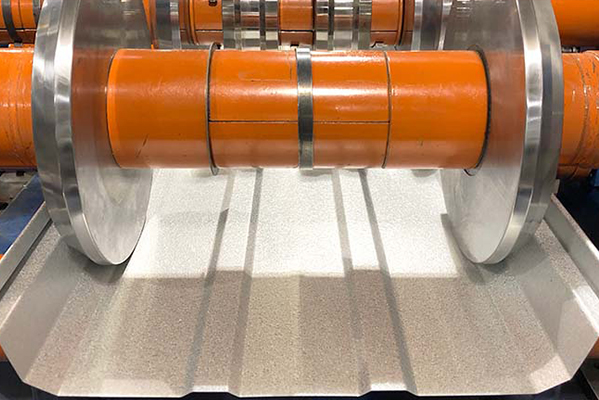Navigation Menu
Contact Us
- Email:
- info@wxavatar.com
- Address:
- Yurong Village, Yuqi Street, Huishan District, Wuxi, China.
Release Date:Apr 02, 2025 Visit:36 Source:Roll Forming Machine Factory
Metal shingle lines refer to the visible rows or courses of metal shingles installed on a roof. These lines are created by the overlapping pattern of individual metal shingles as they are installed from the roof's edge upward to the ridge. The appearance and functionality of these lines are important considerations in both residential and commercial metal roofing systems.
Characteristics of Metal Shingle Lines
Overlapping Design: Metal shingles typically install in an overlapping pattern where each higher row covers part of the row below it, creating water-shedding channels.
Consistent Spacing: Professional installers maintain uniform spacing between shingle lines to ensure both proper water drainage and visual appeal.
Reveal: The "reveal" refers to the exposed portion of each shingle between overlapping courses, which determines how much of each shingle is visible after installation.
Directionality: Metal shingle lines typically run horizontally across roofs, though some designs may incorporate vertical or diagonal patterns for aesthetic purposes.
Importance of Properly Installed Shingle Lines
Waterproofing: Correctly aligned shingle lines ensure proper water flow off the roof without leakage
Wind Resistance: Proper overlapping and fastening along shingle lines improves wind uplift resistance
Thermal Movement: Metal expands and contracts with temperature changes, so shingle lines must accommodate this movement
Aesthetic Appeal: Straight, evenly spaced shingle lines create a visually pleasing roof appearance

Installation Considerations
Installers use various techniques to maintain straight shingle lines:
Chalk lines for alignment
Laser levels for precision
Starter strips at the eaves
Specialized fastening patterns that allow for metal expansion
The visibility of metal shingle lines can vary based on:
Shingle profile (standing seam, tile-like, shake-style)
Color choices (high-contrast colors make lines more visible)
Roof pitch (steeper pitches make lines less noticeable from ground level)
Modern metal shingle systems often incorporate hidden fasteners and interlocking edges that minimize the appearance of shingle lines while maintaining weathertight performance.